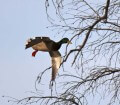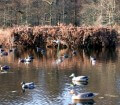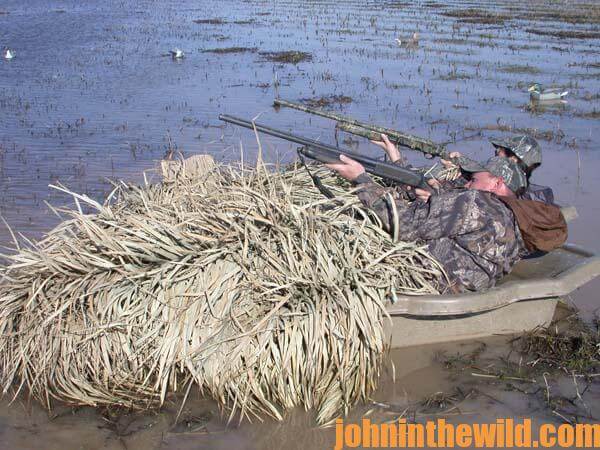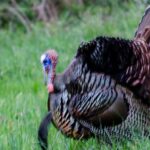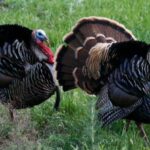A friend of mine, Tate Woods from Mississippi, always muddies the water where he plans to hunt, because that’s what ducks do. “When I’m going to my blind in my boat, I often will ride through my decoys to muddy the water. As I’m putting the decoys out, I’ll stir up the bottom too. If I’m hunting with three or four other hunters, we all may walk around the decoys before we get in our blind to muddy-up the water. I believe muddy water acts like a magnet to pull ducks out of the sky. If ducks spot muddy water from high in the sky and see the decoys sitting on that off-colored water, the birds have no reason not to believe that they’re seeing a group of actively-feeding ducks. The more realistic you make the decoys appear, the more likely you will be to draw in high-flying ducks.”
 Jeff Poe (http://biglakeguideservice.com) of Lake Charles, Louisiana, a waterfowling guide in the winter who also guides to redfish, speckled trout and flounder the rest of the year, says he’s read many different articles on how to place decoys and what set-ups tend to draw in the most ducks. However, from Poe’s experience, he’s learned that clustering decoys in small groups tends to bring in ducks better than any other system in the area of Louisiana where he lives on the Gulf Coast. “Usually I’ll set-out some big groups of decoys and some small groups of two to eight decoys away from the main body of decoys. I always leave a flight path for the ducks to come in to as well as open water right in front of the blind in which the ducks can light. Generally, ducks fly and feed in small groups. Sometimes several small groups may feed together to form a large group. But even in a big flock of ducks, you’ll see small groups of ducks feeding away from the main body.
Jeff Poe (http://biglakeguideservice.com) of Lake Charles, Louisiana, a waterfowling guide in the winter who also guides to redfish, speckled trout and flounder the rest of the year, says he’s read many different articles on how to place decoys and what set-ups tend to draw in the most ducks. However, from Poe’s experience, he’s learned that clustering decoys in small groups tends to bring in ducks better than any other system in the area of Louisiana where he lives on the Gulf Coast. “Usually I’ll set-out some big groups of decoys and some small groups of two to eight decoys away from the main body of decoys. I always leave a flight path for the ducks to come in to as well as open water right in front of the blind in which the ducks can light. Generally, ducks fly and feed in small groups. Sometimes several small groups may feed together to form a large group. But even in a big flock of ducks, you’ll see small groups of ducks feeding away from the main body.
“In my big group of decoys, I’ll place one decoy or a pair of decoys that I call the focus duck. This decoy or pair of decoys will in some way be different from the rest of the decoys in the main group. For example, a focus decoy may be two pintail decoys in a group of mallard decoys or two black duck decoys in a group of mallard decoys. I put my focus decoys on the downwind side of my main group of decoys in the exact spot where I want the ducks to land. If I’m hunting a narrow slough that is perhaps 60-yards across, I’ll place some of my decoys in the shallow water near the far bank. By doing this, I prevent the ducks from landing on the outer edge of my decoys. I force the ducks to land on the inside of my large decoy spread and hopefully inside my smaller groups of decoys.”
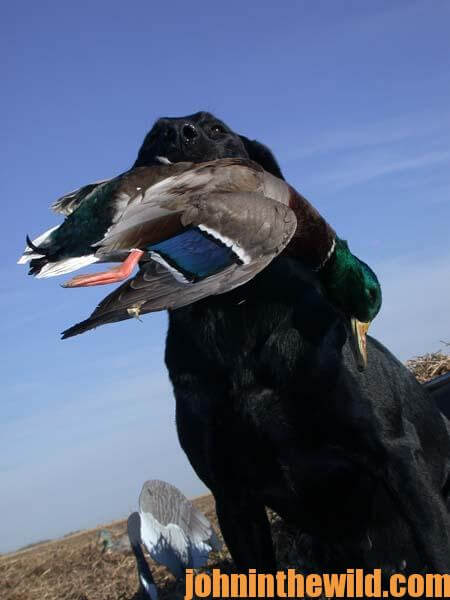 Joel Homansky of Savannah, Georgia, on the Atlantic Ocean coast, another of the nation’s top duck hunters, advises that, “I usually set-up for woodies early in the morning when they’re flying away from the roost in a secondary creek that feeds the backwater. I prefer calm water for placing my decoys. I’m aware that most folks say that wood ducks won’t come to decoys. However, I believe the decoys attract the attention of the woodies and keep them from noticing me and/or my blind. I use an Arkansas pintail whistle to make the woodies give me a second look. When hunting backwater areas like this, I’ve found that wearing camo is critical to my scoring on the birds.”
Joel Homansky of Savannah, Georgia, on the Atlantic Ocean coast, another of the nation’s top duck hunters, advises that, “I usually set-up for woodies early in the morning when they’re flying away from the roost in a secondary creek that feeds the backwater. I prefer calm water for placing my decoys. I’m aware that most folks say that wood ducks won’t come to decoys. However, I believe the decoys attract the attention of the woodies and keep them from noticing me and/or my blind. I use an Arkansas pintail whistle to make the woodies give me a second look. When hunting backwater areas like this, I’ve found that wearing camo is critical to my scoring on the birds.”
Or, if Homansky plans to hunt late in the season on the main part of the Savannah River in the big, open-water regions, he’ll put out 100 or more decoys. “I use a combination of big duck decoys and quart milk jugs painted black. All the waterfowl want to see is movement on the water, which the milk jugs can give. Too, I’m convinced that using a well-camouflaged floating blind is the key to taking more ducks. I like a three-person boat made with hinged, canvas sides that can be kept covered until my friends and I are ready to shoot. The entire length of the Savannah River has a strong tide twice a day, and often big logs will be floating in the river. Many times the logs will block off access to a slough or a portion of the backwater you plan to hunt. So, if you don’t scout a day or two before your hunt to know how to set-up, then the route to the ducks may be cut off. When the tide is running strong, the floating logs in the main river can be treacherous. Therefore, wearing life preservers is a must when you set up and/or hunt ducks near my home, and I certainly don’t advise anyone to run down the river full throttle. Having a boat large enough to carry you and your gear is also critical to safe duck hunting on the Savannah River.”
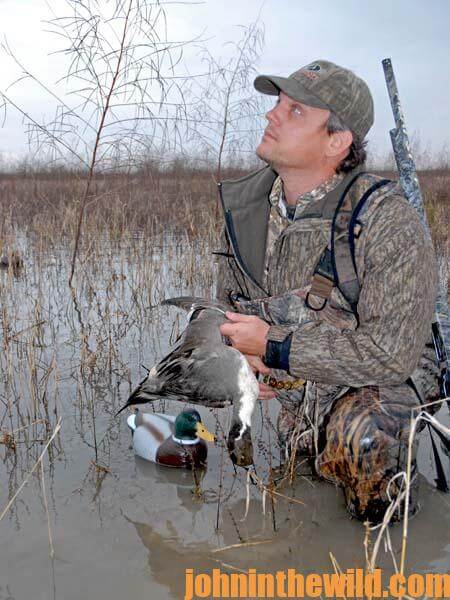 To learn more about all types of hunting and fishing, see John E. Phillips’ print and eBooks at https://johninthewild.com/books.
To learn more about all types of hunting and fishing, see John E. Phillips’ print and eBooks at https://johninthewild.com/books.
Also you can download free books by going to https://johninthewild.com/free-books.

